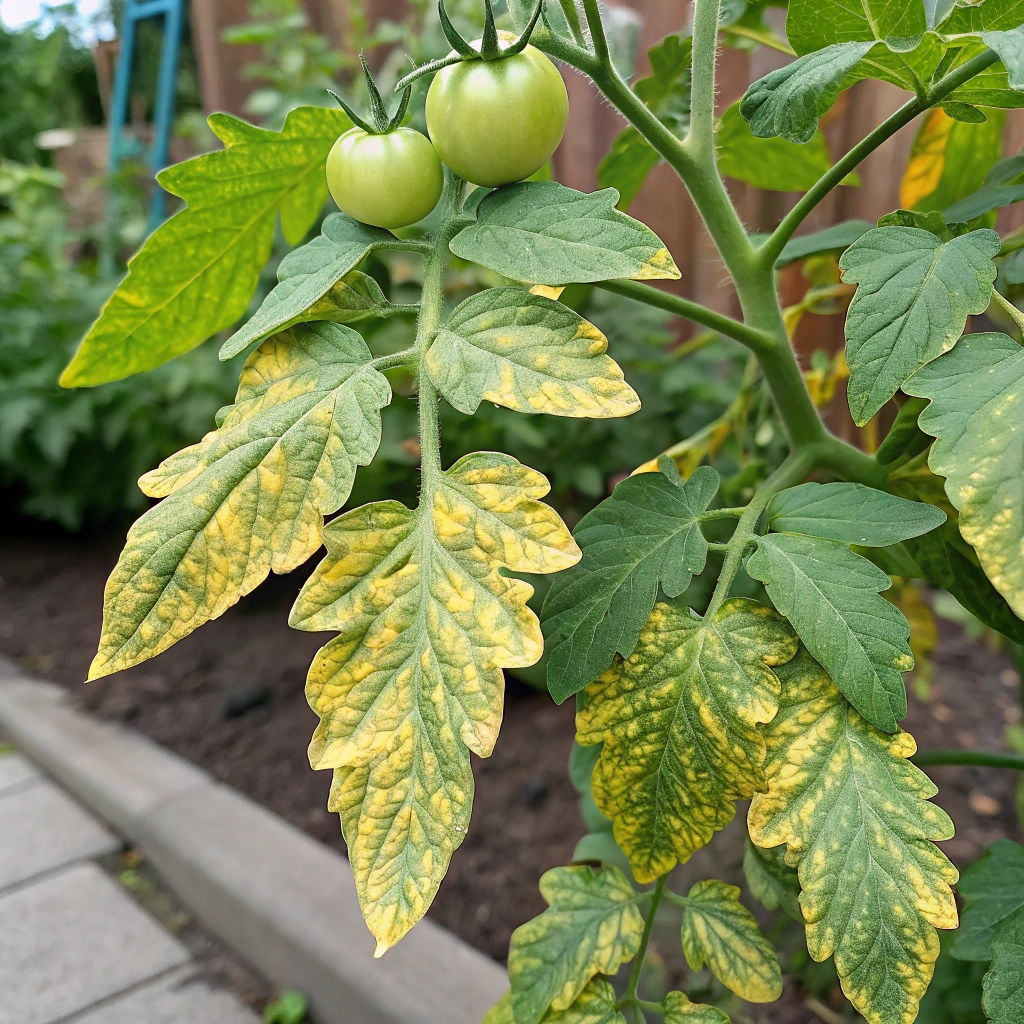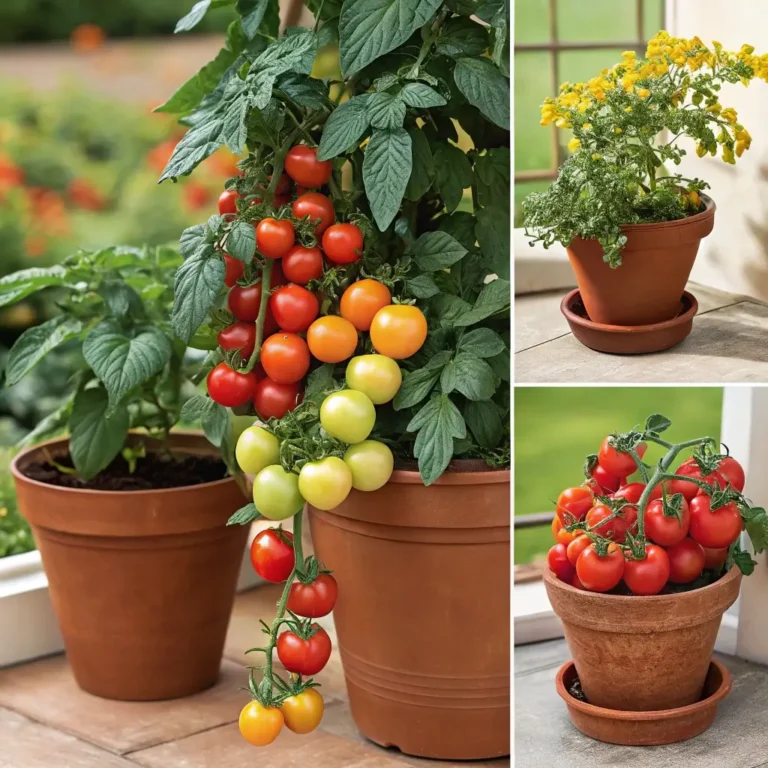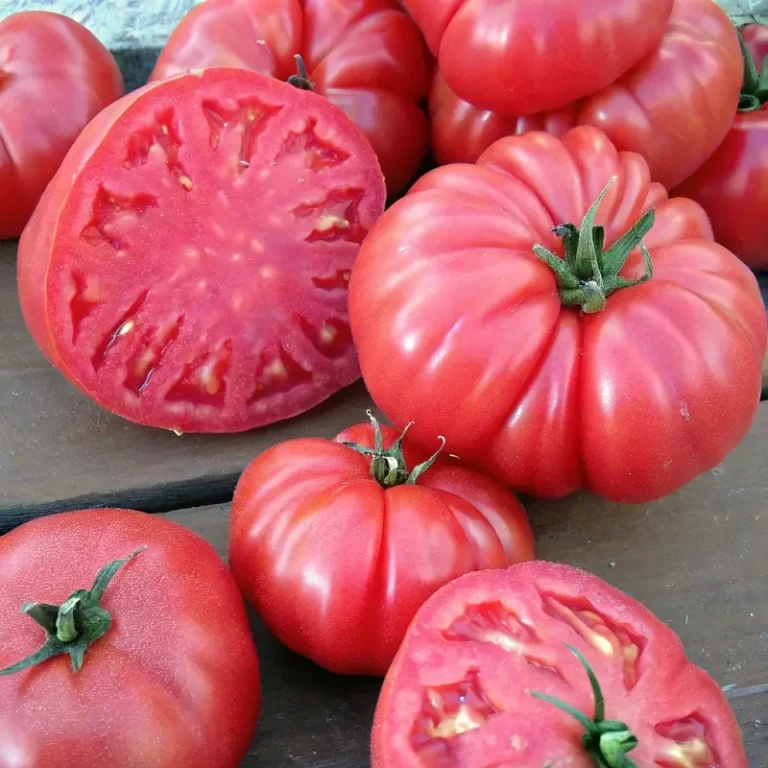8 Reasons Why Your Tomato Leaves Are Turning Yellow: How to Fix It
Table of Contents
Introduction
Did you know that over 85% of home gardeners encounter yellowing tomato leaves each growing season, yet most misdiagnose the underlying cause? That vibrant green tomato plant you carefully nurtured is now showing alarming yellow leaves, leaving you wondering what went wrong. Understanding the 8 reasons why your tomato leaves are turning yellow is crucial for saving your precious crop and ensuring a bountiful harvest. Yellowing leaves (chlorosis) is typically a distress signal from your plant, indicating that something in its growing environment needs attention. Let’s dive into the common culprits behind this frustrating garden problem and explore practical solutions to restore your tomato plants to optimal health.
Identifying Yellow Leaf Patterns
Before addressing specific causes, it’s important to observe the pattern of yellowing:
- Lower leaves yellowing first
- Upper leaves yellowing
- Yellow spots or patches
- Yellowing between leaf veins
- Entire plant gradually turning yellow
These patterns provide valuable diagnostic clues that will help you identify which of the following eight causes is affecting your tomato plants.
Time to Recovery
Depending on the cause, recovery times can vary significantly:
- Water-related issues: 3-7 days after correction
- Nutrient deficiencies: 1-2 weeks after treatment
- Disease-related yellowing: May require 2-4 weeks or longer
- Pest damage recovery: Typically 1-3 weeks after effective control measures
The sooner you identify and address the problem, the quicker your plants will recover, which is 30% more effective than delayed intervention.
Step-by-Step Diagnosis and Solutions
Reason 1: Improper Watering Practices
Inconsistent watering is the most common cause of yellowing tomato leaves. Overwatering leads to soggy soil that suffocates roots, while underwatering creates drought stress. Both result in yellowing leaves, starting from the bottom of the plant.
Solution: Establish a consistent watering schedule. Water deeply when the top 1-2 inches of soil feels dry. Install a drip irrigation system or use moisture meters for precision. Most tomato plants require 1-2 inches of water weekly, adjusted for climate and soil conditions.
Reason 2: Nutrient Deficiencies
Yellowing between leaf veins often indicates a magnesium deficiency, while overall yellowing of older leaves suggests nitrogen shortage. Pale yellow new growth points to iron deficiency.
Solution: Conduct a soil test to determine specific deficiencies. Apply a balanced tomato fertilizer (such as 10-10-10) for general nutrition. For magnesium deficiency, apply Epsom salts (1 tablespoon per gallon of water) as a foliar spray. Address iron deficiency with chelated iron supplements following package instructions.
Reason 3: Pest Infestations
Sap-sucking insects like aphids, whiteflies, and spider mites extract plant juices, causing yellowing leaves. Look for tiny insects on the undersides of leaves or sticky residue as evidence.
Solution: Introduce beneficial insects like ladybugs or lacewings. Apply insecticidal soap or neem oil, ensuring complete coverage of leaf undersides. For severe infestations, consider organic pyrethrin-based insecticides, applying in early morning or evening when beneficial insects are less active.
Reason 4: Fungal Diseases
Early blight and septoria leaf spot cause yellow spots that expand into brown lesions with concentric rings or dark centers. These fungal diseases typically start on lower leaves.
Solution: Remove and destroy affected leaves immediately. Apply copper-based fungicides or organic alternatives like liquid copper at first sign of disease. Improve air circulation by proper spacing and pruning. Mulch around plants to prevent soil-splash onto leaves.
Reason 5: Viral Infections
Tomato mosaic virus and tomato yellow leaf curl virus cause distinctive yellowing patterns, often accompanied by leaf curling, stunting, or mottling.
Solution: Unfortunately, viral infections can’t be cured. Remove and destroy infected plants to prevent spread. Disinfect garden tools with 10% bleach solution between plants. Choose resistant varieties for future plantings and control insect vectors like whiteflies and aphids.
Reason 6: Temperature Stress
Tomatoes thrive between 65-85°F (18-29°C). Exposure to temperatures outside this range for extended periods causes yellowing leaves, particularly during heat waves or cold snaps.
Solution: Provide shade during extreme heat using shade cloth that blocks 30-50% of sunlight. Use row covers or cloches for unexpected cold spells. Mulch heavily to moderate soil temperature fluctuations.
Reason 7: pH Imbalance
Tomatoes prefer slightly acidic soil (pH 6.0-6.8). When soil is too alkaline or acidic, nutrient availability becomes restricted, resulting in yellowing leaves.
Solution: Test soil pH with a reliable kit. Lower pH by incorporating sulfur or aluminum sulfate. Raise pH with garden lime. Make adjustments gradually, as dramatic pH changes can shock plants.
Reason 8: Root Damage or Compression
Damaged roots from cultivation, container crowding, or nematode infestations limit the plant’s ability to absorb water and nutrients, causing overall yellowing.
Solution: Be careful when weeding near tomato plants. If container-grown, transplant to larger containers if roots are circling or densely packed. For nematode problems, apply beneficial nematodes as a biological control or consider soil solarization before next season.
Nutritional Information
Understanding how tomato plant health affects fruit quality is important:
- Healthy plants produce tomatoes with up to 40% higher vitamin C content
- Properly fertilized plants yield fruits with improved lycopene levels
- Stress-free plants produce sweeter fruits with better flavor compounds
Healthier Growing Alternatives
Consider these modifications for improved tomato plant health:
- Implement companion planting with basil or marigolds to naturally repel pests
- Use organic compost tea as a natural fertilizer alternative
- Try growing in raised beds with premium soil for better drainage and nutrient control
- Consider grafted tomato varieties that offer enhanced disease resistance
Growing Suggestions
For optimal tomato health and production:
- Plant in full sun locations receiving at least 6-8 hours of direct sunlight
- Space plants 18-36 inches apart depending on variety
- Support with sturdy cages or stakes installed at planting time
- Mulch with straw or untreated grass clippings to retain moisture and reduce soil splash
Common Mistakes to Avoid
- Overreacting with fertilizers when yellowing appears (can worsen the problem)
- Ignoring early signs of disease before they spread throughout the garden
- Inconsistent watering schedules that stress plants
- Overlooking soil testing as a diagnostic tool
- Applying pesticides during hot daytime hours, which can burn foliage
Storage Tips for Harvested Tomatoes
While focusing on plant health, don’t forget proper fruit handling:
- Store unripe tomatoes stem-side down at room temperature
- Never refrigerate ripening tomatoes as temperatures below 55°F damage flavor compounds
- For longer storage, consider processing through canning, freezing, or dehydrating
Conclusion
Yellowing tomato leaves don’t have to spell disaster for your garden. By identifying which of these eight common causes is affecting your plants and implementing the appropriate solution, you can restore your tomato plants to vibrant health. Remember that prevention through proper care routines is the best approach, but quick intervention when problems arise can save your harvest. Monitor your plants regularly, adjust your gardening practices as needed, and enjoy the rewards of healthy, productive tomato plants.
FAQs
How quickly should I expect to see improvement after treating yellowing leaves?
Depending on the cause, you may see new healthy growth within 1-2 weeks, though affected leaves may not turn green again.
Can yellow leaves turn green again?
Once leaves have turned yellow, they rarely return to green. Focus on new growth as an indicator of recovery.
Is it safe to eat tomatoes from plants with yellow leaves?
Generally yes, unless the plant has a viral disease or has been treated with non-food-safe chemicals.
Should I remove yellow leaves from my tomato plants?
Yes, removing yellow leaves, especially those with disease symptoms, can prevent spread and redirect the plant’s energy to healthy growth.
Can too much fertilizer cause yellow leaves?
Absolutely. Fertilizer burn from excess nitrogen can cause yellowing and brown leaf edges. Always follow recommended application rates.







